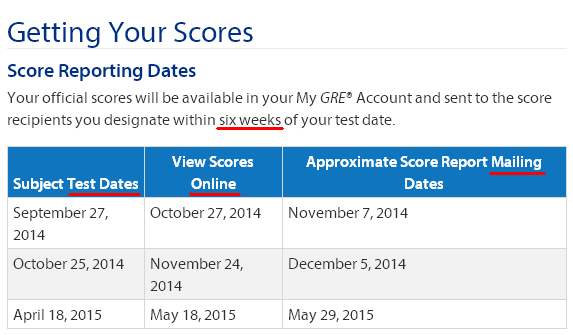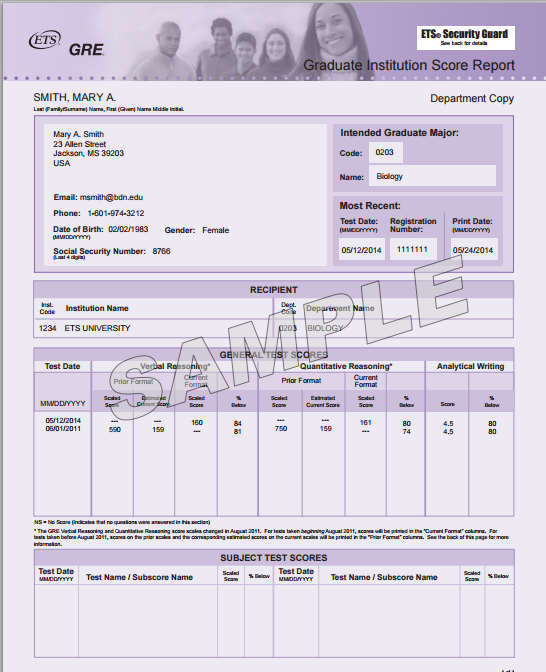The first thing you should know: take your GRE about 1 ½ to 2 months before your earliest important deadline. It is going to take approximately that much time for your score reports to reach the universities you have chosen as score recipients (i.e. the universities you chose to send your score reports to). Here’s what the ETS says:
 About 15 days to a month after your test, you will be able to view online and print out, for your own records, your score report in the PDF format shown below:
About 15 days to a month after your test, you will be able to view online and print out, for your own records, your score report in the PDF format shown below:
Having seen the format, you probably have some questions: for example, why are the scores for the Verbal and Sections given under two different headings: prior format and current format? And what is the estimated current score under prior format for?
Well, before August 2011, the GRE used to score the Verbal and Quantitative sections on a scale of 200-800 instead of between 130-170 as they now do. According to the ETS, GRE scores are valid for 5 years. This means that GRE scores taken in September 2011 will continue to be valid according to the ETS till September 2016. Until then the ETS has to provide a way of comparing the old and new scores. They do this by providing:
- an old score equivalent for tests taken under the Revised General GRE format (taken on or after 01 August 2011)
- a new score equivalent for tests taken under the earlier GRE format (i.e. before 01 August 2011)
This is why the scores for the Verbal and Quantitative sections in the PDF shown above are given in two columns: ‘Prior Format’ and ‘Current Format’. This allows universities to easily compare the scores of students who have taken the older versions of test and those who have taken the newer one without too much difficulty. The ‘Estimated Current Score’ column (under ‘prior format’) was specially meant for candidates who had taken the old format of the test and for whom American universities needed an estimated equivalent score in the new format.
Somewhat pointlessly, the ‘estimated current score’ is also given for students who have taken the new version of the test (the Revised General GRE as it is called) – this is pointless since they already have an actual score in the new column. But we guess, since the ETS had the columns, they had to fill them up! Perhaps, reports after August 2016 will be simpler. Practically, however, this comparative data will not make much of a difference to you since most universities do not accept GRE scores that are older than 3 years. So, American universities probably stopped accepting September 2011 reports in September 2014.
Here are some other important links to check out:
Can I ask the ETS to show universities only the scores I want them to see?
Ordering additional GRE score reports
And just in case, you are interested here’s the PDF format the score report that the universities you are applying will see if you have asked the ETS to send them a score:



